Posted by: Ken @ 1:31 pm
Mary Lou’s favorite local bird is the Painted Bunting, but the Elegant Trogon goes down as her “anywhere” favorite. (Read here how the trogon was responsible for Mary Lou’s “conversion.”) Both share bright green and red feathers, though the Painted Bunting adds a generous dose of brilliant blue. My favorite? It’s hard to say, as the Rose-breasted Grosbeak was probably my “epiphany” bird. As a kid I will not forget watching a male displaying to a female on the ground, walking around with his red chest all puffed up and singing brilliantly. However, Painted Buntings are one of my favorites, with a caveat– I really like seeing them in the wild rather than at feeders.
Painted Buntings winter here, and I have gotten plenty of shots of males at Okeeheelee Park, in western Palm County. On the feeder…
…and picking up scraps under the feeder.
The feeders at Corkscrew Swamp are also reliable places to find Painted Buntings.
In the field, male Painted Buntings seem to be quite reclusive. Perhaps they lurk in the shrubs to hide their bold coloring. Female and immature buntings, while beautiful in their own right, have been much more cooperative subjects.
In South Florida, we have a natural bird feeder. The Trema is a fruiting tree that is very valuable to wildlife. It sets fruit almost continuously during the winter, and its berries are in various stages of ripening. Individual trees seem to become more attractive to birds at different times. The favored tree changes from one week to the next.
The Tremas in this cluster along the gravel road that leads into the wetlands are the size of shrubs.
Trema berries form along the stems, and birds usually eat the red ones, though I have seen many take green berries as well.
Palm Warblers are numerous all winter, and they congregate in the Trema trees, probably more interested in gleaning insects that are attracted to the fruits.
Yellow-rumped Warblers do relish the Trema berries.
This week, one particular tree fruited optimally. Catbirds and mockingbirds flocked to it, but among its visitors was a White-eyed Vireo that ate some of the berries.
Mary Lou and I were delighted when a male Painted Bunting flew in to join the feast.
The exotic and invasive Brazilian Pepper was imported as an ornamental plant and has spread all over South Florida. Although despised because it displaces much of the native flora, it too provides food throughout the winter. Raccoons seem to prefer it, judging by the copious amount of seeds in their scat.
Prairie Warblers have been scarce this winter, and I was pleased to find this female catching insects amid the pepper berries.
A Blue-gray Gnatcatcher was chasing small flying insects against a backdrop of clusters of Brazilian Pepper.
It took flight and I captured this image quite by accident.
The lake was as smooth as glass in the stillness of early morning. Along the shore, a Wood Stork cast its reflection.
A sun-bathing Anhinga was mirrored on the lake’s surface.
In the still-flooded grassland around the lake, a White Ibis had caught a crayfish, and was running away from a group of immature ibises that tried to steal its prize.
A white heron landed in a nearby tree, and I almost dismissed it as just another egret, when I noticed the color of its bill– bluish with a dark tip, and its green legs. It was an immature Little Blue Heron.
Walking back home, this American Kestrel watched me from atop the central shoot of a Royal Palm.
Click here for a searchable index of earlier ROSYFINCH RAMBLINGS posts.














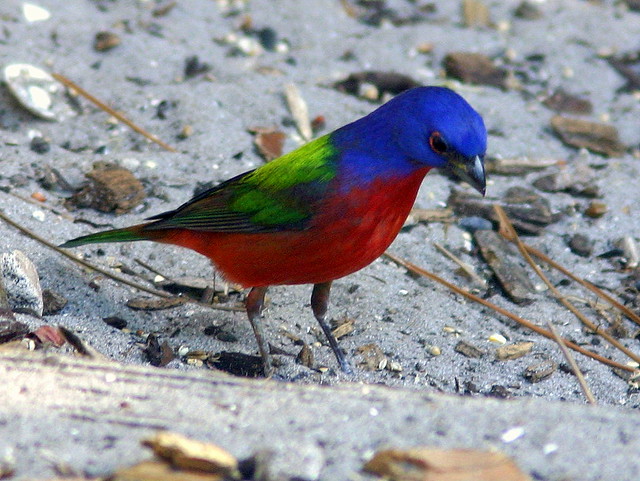
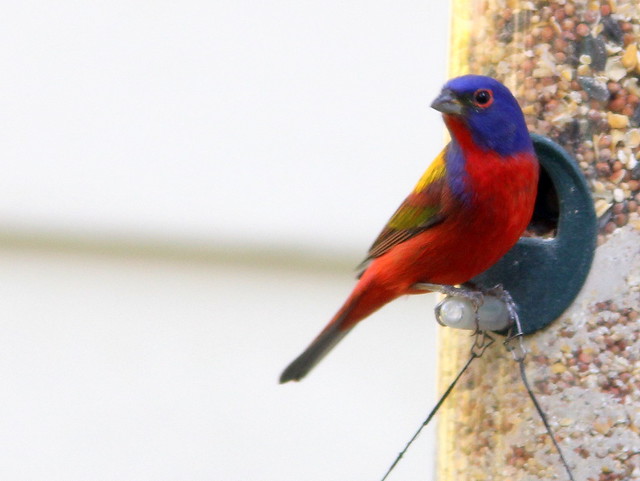


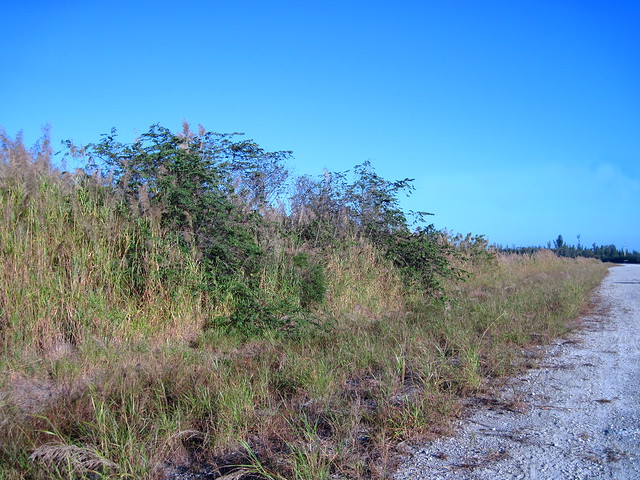
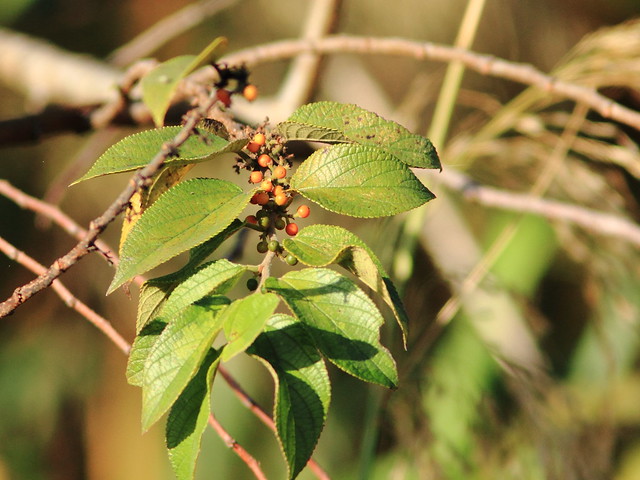
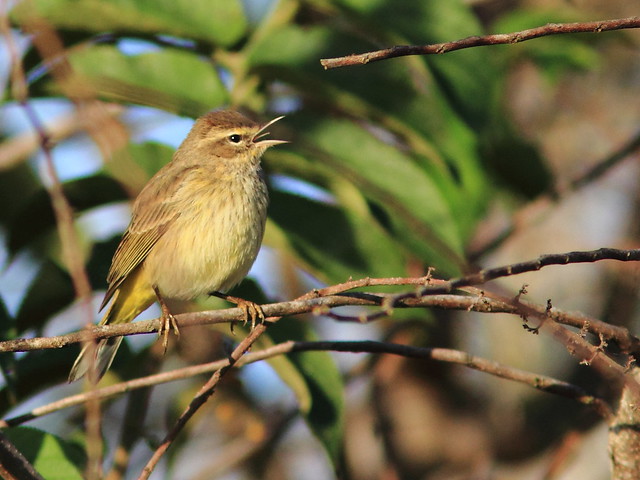
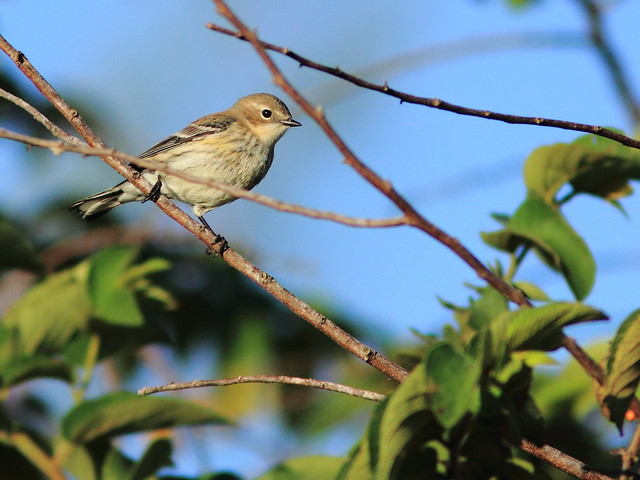
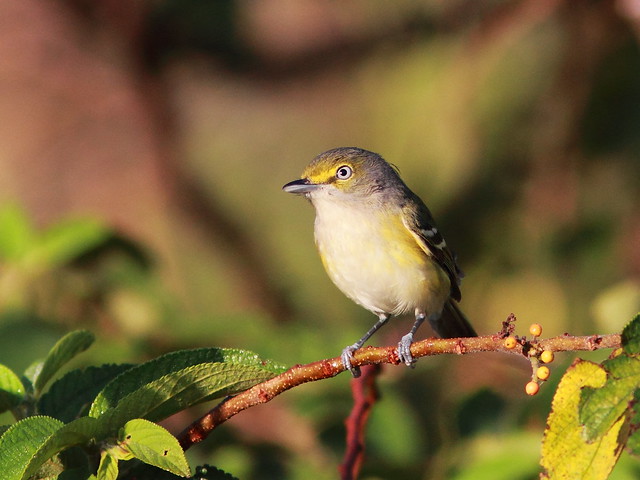
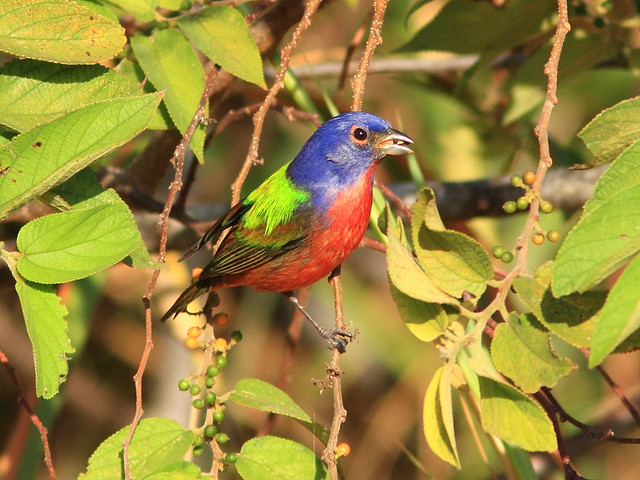
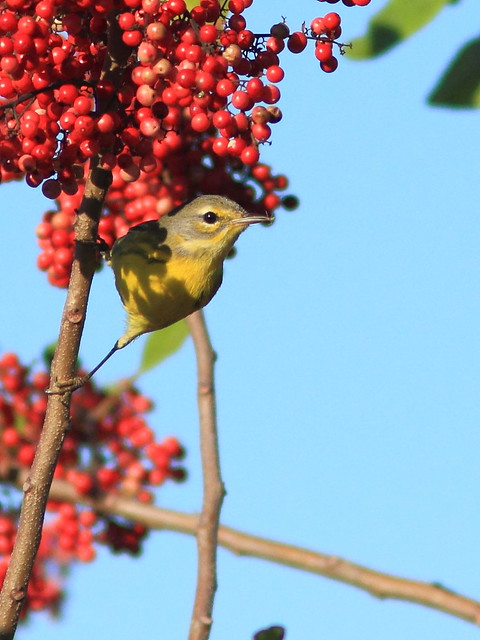
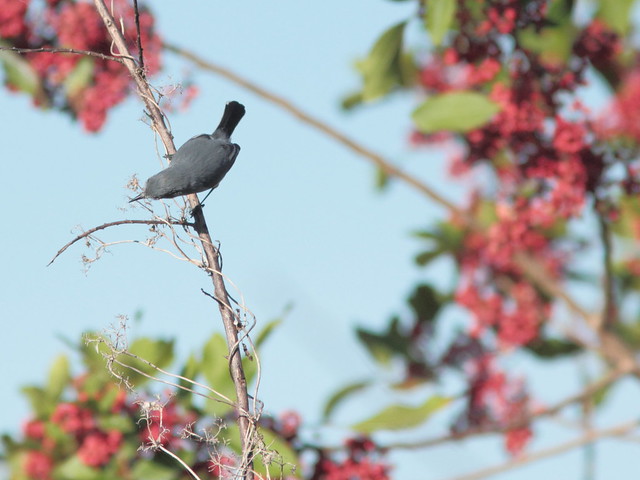
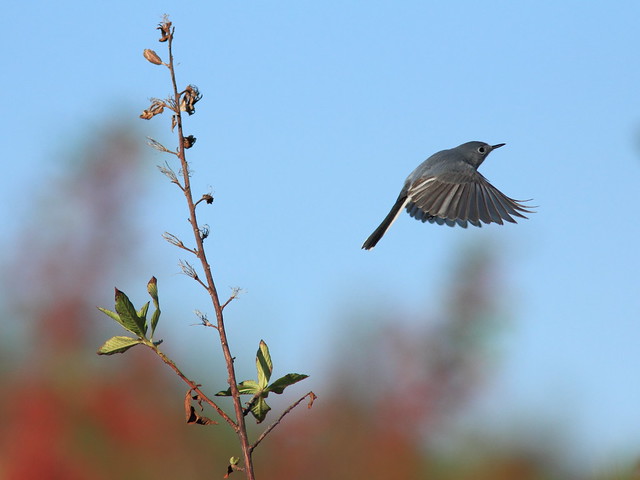
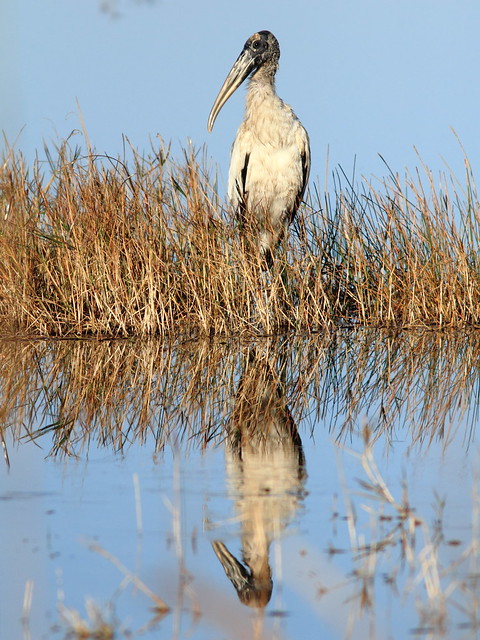
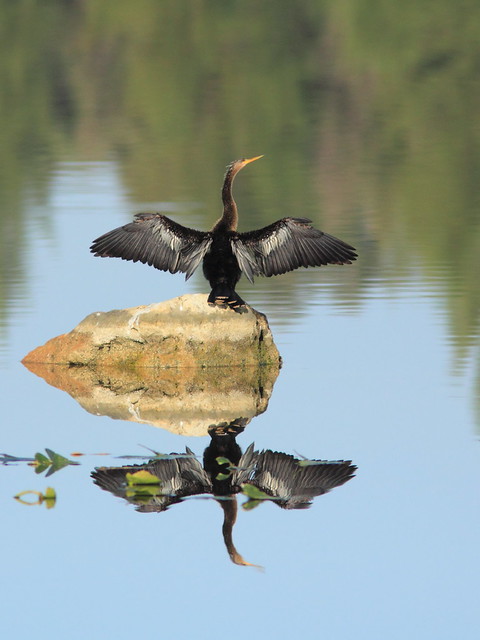
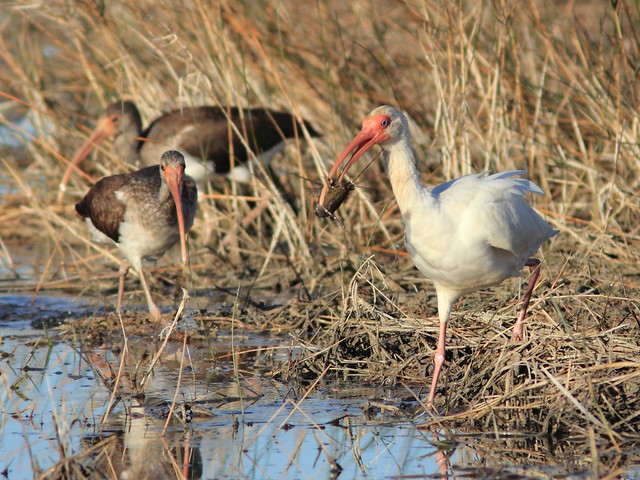
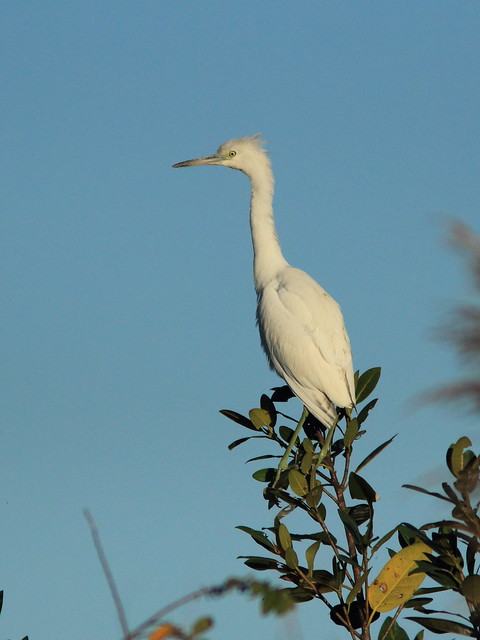
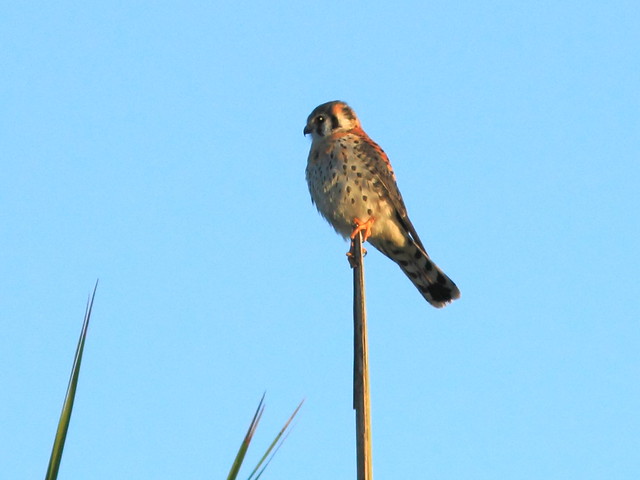
January 22nd, 2012 at 9:23 pm Beautiful as always, Ken: thank you. Helps me deal with my homesickness for Florida (grew up in Broward County, moved to northern Virginia a year ago from Brevard County, home to make it back)
January 23rd, 2012 at 5:26 pm Wow, your Painted Bunting is just gorgeous. They are beautiful birds. Wonderful shots of all the birds, you are a great photographer.
January 23rd, 2012 at 6:21 pm Gorgeous photos!
January 24th, 2012 at 6:38 pm All great photos but the sun-bathing Anhinga is very special. The Painted Buntings are absolutely beautiful. I enjoyed going back and reading about Mary Lou’s “conversion” to birding. A perfect birding moment!
January 24th, 2012 at 9:23 pm WOW! What an awesome series! I was glad to stumble onto your blog via WBW. The Buntings are beautifully coloured (even the females). The female is almost camoflagued in that tree. Great bird photography!!
January 24th, 2012 at 10:15 pm The best series yet on WBW. Those Painted Buntings are unreal. I would love to see one some day. Great clarity in your photos. The “accident” inflight shot is great. Well done all.
January 25th, 2012 at 3:40 am I’ve never seen a Painted Bunting except in photos and yours are beautiful! That Gnatcatcher shot in flight is fantastic, Ken! As is the reflection photo.
January 25th, 2012 at 11:27 am This Painted Bunting is simply awesome!
January 25th, 2012 at 9:10 pm Those are just gorgeous birds — we’re in Florida too now, but the only painted buntings I’ve ever seen were in Texas (in Port Aransas, when we spent a season there). thank you for sharing — I hope some of your birding luck rubs off on me!@
January 26th, 2012 at 11:27 am Amazing 19 course meal Ken. I fasten my seat belt when I open up your blog because I know I’m in for a wild ride. This time I could have used a four point harness. I just knew by your set up you were going to have a Painted bunting “in the wild.” What a perfect shot it is. Gnat-catcher in flight is a prize too. Ibis w/ crayfish…Stork….cormorant….All excellent! Incredible sights. I simply must get to Florida before the season ends. Bravo!!!
January 26th, 2012 at 4:53 pm The Painted Buntings are gorgeous! The Anhinga photo is spectacular!
January 26th, 2012 at 5:42 pm Awesome photos as always Ken! The Painted Bunting is so colorful, I would love to see this bird one day. The White Ibis with the crayfish and the Blue-gray Gnatcatcher are fabulous but the White-eyed Vireo is stunning!
January 29th, 2012 at 1:14 pm Thank you, all, for your kind comments!